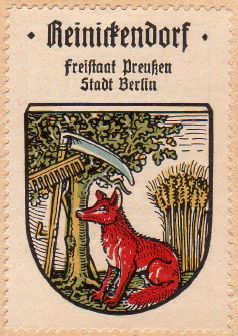Reinickendorf: Difference between revisions
Jump to navigation
Jump to search
Knorrepoes (talk | contribs) m (Text replace - "'''Origin/meaning :'''<br/>" to "====Origin/meaning====") |
Knorrepoes (talk | contribs) m (Text replace - "|width="15%"|50 px|right |}" to "|width="15%"|50 px|right |}<seo title="Wappen, Gemeindewappen" />") |
||
| Line 3: | Line 3: | ||
|width="70%" align="center" |'''Heraldry of the World<br/>Civic heraldry of [[Germany]] - [[Deutsche Wappen|Deutsche Wappen (Gemeindewappen/Kreiswappen)]]''' | |width="70%" align="center" |'''Heraldry of the World<br/>Civic heraldry of [[Germany]] - [[Deutsche Wappen|Deutsche Wappen (Gemeindewappen/Kreiswappen)]]''' | ||
|width="15%"|[[File:Germany.jpg|50 px|right]] | |width="15%"|[[File:Germany.jpg|50 px|right]] | ||
|} | |}<seo title="Wappen, Gemeindewappen" /> | ||
Revision as of 18:28, 5 November 2012
| Heraldry of the World Civic heraldry of Germany - Deutsche Wappen (Gemeindewappen/Kreiswappen) |
REINICKENDORF
State : Berlin
Incorporated into : 1920 Berlin
Origin/meaning
The arms were granted on November 28, 1955.
The arms are based on the old village seal, which showed a landscape with a canting fox (Rein is the name of a fox in some legends), some trees and a field of wheat. This seal was also used until 1955 as arms (above left). In the new arms the bunch of wheat was replaced by six wheat-ears. The six wheat-ears symbolise the six former villages.
As with all arms of the Berlin districts, a mural crown with a small shield with the arms of Berlin could be used.
| The arms in the Kaffee Hag albums +/- 1925 |
Literature : Stadler, 1964-1971, 8 volumes. Vogel, 1987


